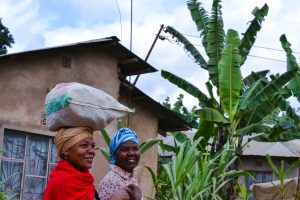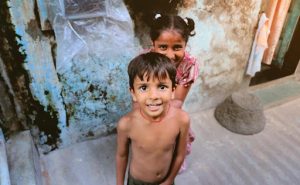The compilation of official national data sources, which include details on home drinking water, sanitation, and hygiene services, is the first step in the JMP estimating process. Harmonized indicators on menstrual health, which are increasingly included in household surveys, have also been added to the JMP’s databases. The fourth quarter of an even year marks the start of the biannual data collection cycle for JMP’s household estimates, which are then released in the second quarter of the following year. The data search entails routinely accessing the websites of national statistics offices, important sector organizations like water and sanitation ministries, and WASH service regulators.
For new datasets, other regional and international databases are also examined. In conjunction with national authorities, UNICEF and WHO regional and country offices promote the identification of newly available datasets. For each of the 234 nations, regions, and territories for which population data is available, the JMP provides Excel country files. These files detail the national data sources that the JMP is capable of using and demonstrate how specific data inputs have been used to produce estimates that are comparable across national boundaries. Draft estimates are distributed to WHO and UNICEF country offices for two months before publication in order to receive technical advice and input from national authorities.
Global monitoring’s main goal is to generate internationally comparable estimates that may be used as a benchmark and to assess national development. For all countries, the JMP generates estimates using a uniform methodology. These can occasionally be different from national data, which might apply various definitions and/or methodologies. The consultation’s objective is to assess the completeness or accuracy of the datasets in the JMP country file and confirm the interpretation of national data in the JMP estimates rather than to compare JMP and national statistics on WASH coverage. National statistics are frequently dependent on the most recent data point from a single data source, whereas the JMP offers modelled estimates based on a regression of all available data points. The JMP makes use of standardized population estimates created by the UN Population Division, which may vary from data from other countries.
Data disaggregation
Based on the SDG service ladders, JMP estimates are regularly broken down by service level (no service, unimproved, limited, basic, and safely managed services). Estimates are also broken down by other pertinent regional, socioeconomic, and personal stratifiers of inequality when it is practical to do so. According to recent surveys, the JMP worldwide database now contains inequality files for 105 nations, which contain standardized facility types and service level estimates broken down by sub-national region and wealth quintile.
Administrative levels (known as admin-2) below the national level, such as divisions, provinces, states, and regions are referred to as sub-national regions. On the basis of household income and expenditure surveys or data on domestic assets in household surveys, the wealth quintiles (richest, rich, middling, poor, and lowest) can be determined. The JMP develops tailored wealth quintiles based on household assets but omits WASH infrastructure to track inequality in WASH. Along with trends calculated using JMP regression rules, these computations are displayed in the JMP inequality files. It is not practical to systematically analyse intra-household disparities since data on access to WASH services are often collected at the household level rather than the individual level. Menstrual health indicators, however, can be broken down by the unique traits of women and girls aged 15 to 49 (for instance, age, functional challenges, ethnicity, and education level). The JMP aims to draw attention to datasets that provide additional kinds of disaggregation.
Data analysis and country estimates
The JMP uses data from 2000 onwards to create estimates for WASH indicators for each nation by fitting regression lines to the gathered data inputs. The JMP generates estimates using a straightforward formula if a country has just one data point or two data points that are less than five years apart. The JMP does linear regression with extrapolation for up to two years forwards and backwards from the latest data point, and extends estimates for up to four additional years if there are two or more data points covering a span of at least five years.
The fraction of the population using improved drinking water sources and the population obtaining drinking water directly from surface water sources are both estimated using ordinary least squares regression. The difference is used to determine the population using unimproved drinking water sources. Similar to this, linear regressions determine the population utilizing unimproved sanitation facilities by subtracting the population using improved sanitation facilities (including shared facilities) from the population practising open defecation. For particular categories of improved facilities—piped drinking water, sewer connections, and septic tanks—separate linear regressions are created. The remaining population is classified as using better sanitation and non-piped water sources, such as latrines and other facilities.
To differentiate between basic and limited drinking water and sanitation services, further regressions are made. To create the trend estimates of the population using improved sanitation facilities, the population that shares an improved sanitation facility is subtracted. Similar trends are predicted for the population’s use of better drinking water sources that take longer than 30 minutes to gather. To estimate the population using at least basic drinking water services, these are removed from trend estimates of improved drinking water sources. Based on data on the population seen to have access to handwashing facilities with soap and water at home, basic handwashing services are estimated using linear regression.
To get national estimates for basic services, different regressions are employed for urban and rural areas, and the population estimates they yield are then pooled. The JMP has not been able to locate enough data to estimate safely managed drinking water and sanitation services in all countries, and sometimes data are not representative of entire national populations, even though the data required to estimate basic drinking water, sanitation, and hygiene services are easily available for most countries. Only when data are available for at least 50% of the relevant population does the JMP produce country-level estimates. Since drinking water and sanitation facilities that are securely managed meet the requirements for basic services, the population with safely managed services is frequently included in statistics on the population with basic services. More in-depth information can be acquired by checking out our Water, Sanitation & Hygiene course.







